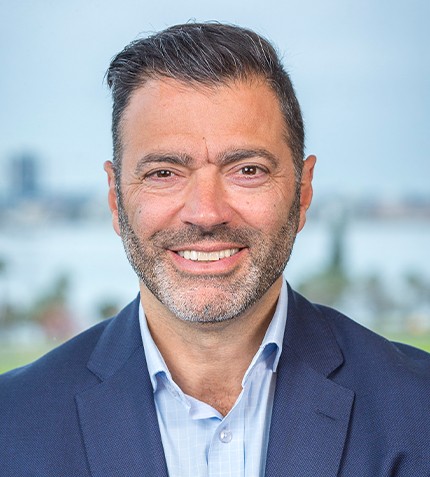
"The PFS confirms the project's financial viability, positioning Frontier Lithium's PAK project as a potential continent-leading, lowest-cost producer of lithium hydroxide."
Trevor Walker
PRESIDENT AND CEO, FRONTIER LITHIUM
What were the main developments at Frontier Lithium in 2023?
In 2023, Frontier Lithium faced a complex and challenging lithium market, which it navigated with resilience through groundbreaking discoveries, strategic hires, and extensive groundwork and studies that confirmed the viability of the PAK lithium project. Additionally, in 2023, the US and Canada experienced the fastest-growing EV sales among major regions, with a 59% increase compared to 2022.
A significant milestone was achieved with the filing of the NI 43-101 Pre-Feasibility Study (PFS) for the PAK project, encompassing an integrated project from a proposed mine in Northwestern Ontario to a lithium hydroxide chemical plant in the Great Lakes Region. The PFS confirms the project's financial viability, positioning Frontier Lithium's 100% owned PAK project as a potential continent-leading, lowest-cost producer of lithium hydroxide, with a pre-tax NPV of US$2.59 billion discounted at 8%.
The PFS results demonstrate Frontier Lithium's potential to become a major, low-cost lithium chemicals producer for the electric vehicle supply chain in North America.
Can you outline the current status of the PAK project and the main challenges you will face along the path to production?
The PAK project is progressing, focusing on advancing the Definitive Feasibility Study (DFS), a pivotal phase in the project's development. The fully integrated mine, mill, and refinery flowsheet, initially demonstrated in the PFS, will undergo refinement during the DFS. The first scope of work, involving the mine and mill, is set to be completed over the next 12 months, aiming to establish a facility producing 200,000 t/y of spodumene concentrate. Alongside these advancements, we continue to de-risk the technical complexities in refining the integrated flowsheet, logistical considerations, and potential environmental and regulatory aspects.
Can you comment on the supply and demand fundamentals for lithium, and how the recent dip in lithium prices has impacted pre-production companies like Frontier Lithium?
Despite an 80% decrease in lithium chemical prices in 2023, Frontier Lithium remains optimistic about short-term opportunities and the long-term fundamentals of the lithium market. The company anticipates global electric vehicle penetration rates to exceed 9%, positioning them well for future electrification and growth. The dip in lithium prices, including fluctuations in China's spot prices, has not deterred Frontier Lithium's confidence, emphasizing its enduring value proposition and strategy. Last year, EV sales grew 31% year-over-year, with BEV sales up by 27% and PHEV sales by 43%. With strong demand growth projected regionally, the proposed project would capitalize on proximity to emerging local markets and competitive advantages from supportive infrastructure in northern Ontario.
Has Frontier Lithium taken advantage of government incentives like the Critical Mineral Exploration Tax Credit (CMETC)?
Frontier Lithium has capitalized on government incentives, securing C$2 million in grant funding from the Government of Ontario for lithium processing research. The company has also received support from the Critical Mineral Innovation Fund through Ontario’s Ministry of Mines to enhance support in battery mineral processing research.
What will make Frontier Lithium’s final product more appealing than that of your competitors, particularly those abroad?
Frontier Lithium's final product will stand out due to its superior quality resources with a low strip ratio. The volatile lithium market in 2023 underscores the significance of quality and a low strip ratio. Quality impacts profitability at the benefaction circuit, while a low strip ratio directly affects the cost of raw material feed. In the face of market fluctuations and oversupply cycles, Frontier Lithium gains an advantage, positioned as a resilient player, shielding against volatility that may impact high-cost producers.
What are Frontier Lithium’s priorities for 2024?
In 2024, Frontier Lithium will focus on delivering the Definitive Feasibility Study as a critical step in establishing the viability of its lithium project. Concurrently, the company prioritizes finalizing the Baseline Environmental study, actively engages in advancing the Impact Benefit Agreement process, and works towards finalizing government subsidy applications. Infrastructure improvements, specifically the development of a Lithium Chemical Refinery, are key focuses.
In March 2024, Frontier was pleased to announce a definitive agreement with Mitsubishi Corporation to establish a joint venture partnership for the PAK Lithium Project mine and a planned lithium chemicals conversion facility. This JV partnership delivers immediate and near-term financing to aggressively advance the first fully integrated lithium mining and processing operation in Ontario. Simultaneously, Frontier Lithium advances offtake conversations and maintains ongoing discussions with stakeholders, reflecting a holistic approach to project development, environmental stewardship, and sustainable partnerships in the dynamic lithium industry landscape.










